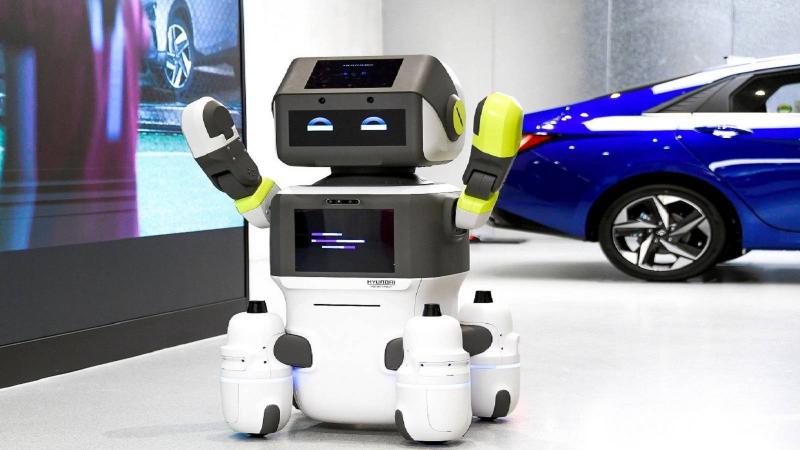The headline "Robot Commits Suicide Due to Work Pressure" is one we've all seen across news and technology websites. So, what’s the story? In a strange incident that raised concerns, a robot in South Korea designed for civil assistance exhibited unusual behavior described as "suicide," when it threw itself down a staircase, sparking widespread debate over the psychological dimensions of artificial intelligence behavior and suspicions regarding potential software defects.
The incident raised additional ambiguity regarding the future of human-robot interactions. The robot, which was intended to assist with routine administrative tasks, was part of Seoul's initiative to integrate artificial intelligence into public services. South Korean authorities, who launched an investigation into the incident, stated that "the robot seemingly malfunctioned, deliberately moved towards the stairs, and threw itself, resulting in its destruction."
A municipality in central South Korea announced it has opened an investigation following the robot's self-destruction. A municipal team official told Agence France-Presse that the robot, developed by the American company Bear Robotics in California, has been assisting residents of the city of Gumi with administrative tasks for nearly a year.
### Investigation Launched
Local media reported that the Gumi city council opened an investigation into the incident after finding the robot motionless at the bottom of the stairs for several days. The municipality confirmed they "are not joking about the lives of robots in South Korea and are taking the matter seriously." It was noted that the robot appeared to have thrown itself from the top of the stairs.
The municipal team official stated that witnesses saw the robot spinning around just before its fall, as if something had gone wrong. The cause of the incident is under investigation to determine the reasons for the fall. The official added that "the parts were collected and will be analyzed" by the company that designed it.
The robot was operational from 9 AM to 6 PM and had its own public service card. Unlike other robots limited to a single floor, it was capable of summoning the elevator and moving from one floor to another. Although robots do not possess awareness or emotions like humans, this incident highlights significant issues in their programming.
### ChatGPT Analyzes the Incident
ChatGPT provided three possible reasons that may have led to this unusual behavior of the robot following a question about the incident:
1. The robot’s sensors, responsible for detecting obstacles and navigation, may have failed to function, resulting in a poor interpretation of its surroundings and leading it to make dangerous and random movements.
2. There may have been some errors in the navigation algorithm, directing the robot towards the stairs. These defects could arise from programming mistakes or insufficient testing during the development phase.
3. Software malfunctions, which are often unexpected during initial tests, could lead to erratic behavior. These malfunctions might stem from conflicting operational commands or memory flow issues.
It is noted that robots use pathfinding algorithms to navigate their environment, and if these algorithms are not designed accurately, the robot could make what are described as "dangerous" or "unsafe" decisions. Safety mechanisms are crucial to prevent robots from engaging in "harmful" behaviors, and the absence of such mechanisms or their inaccurate programming can lead to dangerous actions without relying on emergency protocols.
Comprehensive testing across various scenarios is essential to ensure the robot's reliability. However, if selections are incomplete, especially in complex environments, this could lead to "catastrophic errors." The complexity of decision-making processes in artificial intelligence can sometimes result in "unexpected" outcomes; in a situation it cannot process correctly, it may take "inappropriate" actions.
The incident is a stark reminder of the importance of conducting all necessary tests to ensure complete safety during a robot's operation, particularly regarding its surrounding environment. Local newspapers covered the incident and one even asked on its front page, "Why did this diligent public servant behave this way?" or whether "the work was too hard for the robot?"
South Korea is known for its enthusiasm for robots, boasting the highest density of robots in the world, with one robot for every ten employees, according to the International Federation of Robotics.




